
I have been a Mac user for more than 10 years, and while many things have changed about what I use the Mac for, and how I do my work, one thing has remained consistent – I always move app windows so they line up nicely without overlapping whenever possible. It is tedious, and probably somewhat OCD of me, but I like seeing everything lined up and positioned so I can easily switch from app to app without diving to the dock or doing a ⌘-tab to switch around. Thankfully, Mosaic – a new Mac utility – is here to save the day.
Overview
Mosaic by Light Pillar Software is a simple Mac utility that allows you quickly resize and reposition apps on your desktop. Using either keyboard shortcuts, drag and drop, or even the Touch Bar, apps can be positioned consistently and conveniently to allow for a great aesthetic or a functional working space.
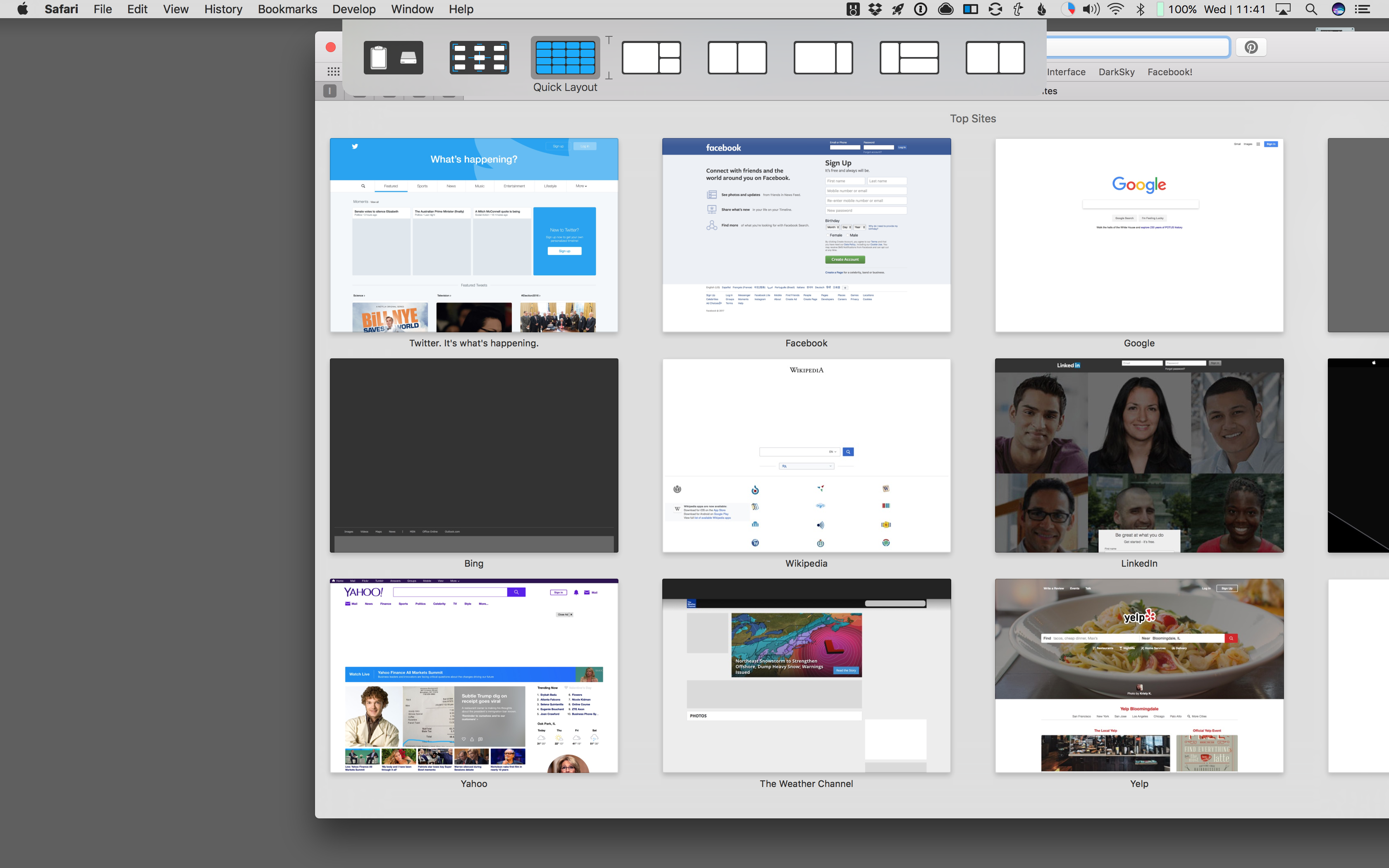
Currently available in two different pricing models, Mosaic can be purchased from the Light Pillar website, or as part of the Setapp subscription catalog.
Using the app is super simple. After getting things setup (allowing accessibility permissions for the app to allow placement and sizing), grabbing any app window and dragging it presents you with a a dialog box across the top of your screen. Simply drag your cursor over one of the sizing options, and BOOM, the app is perfectly positioned.
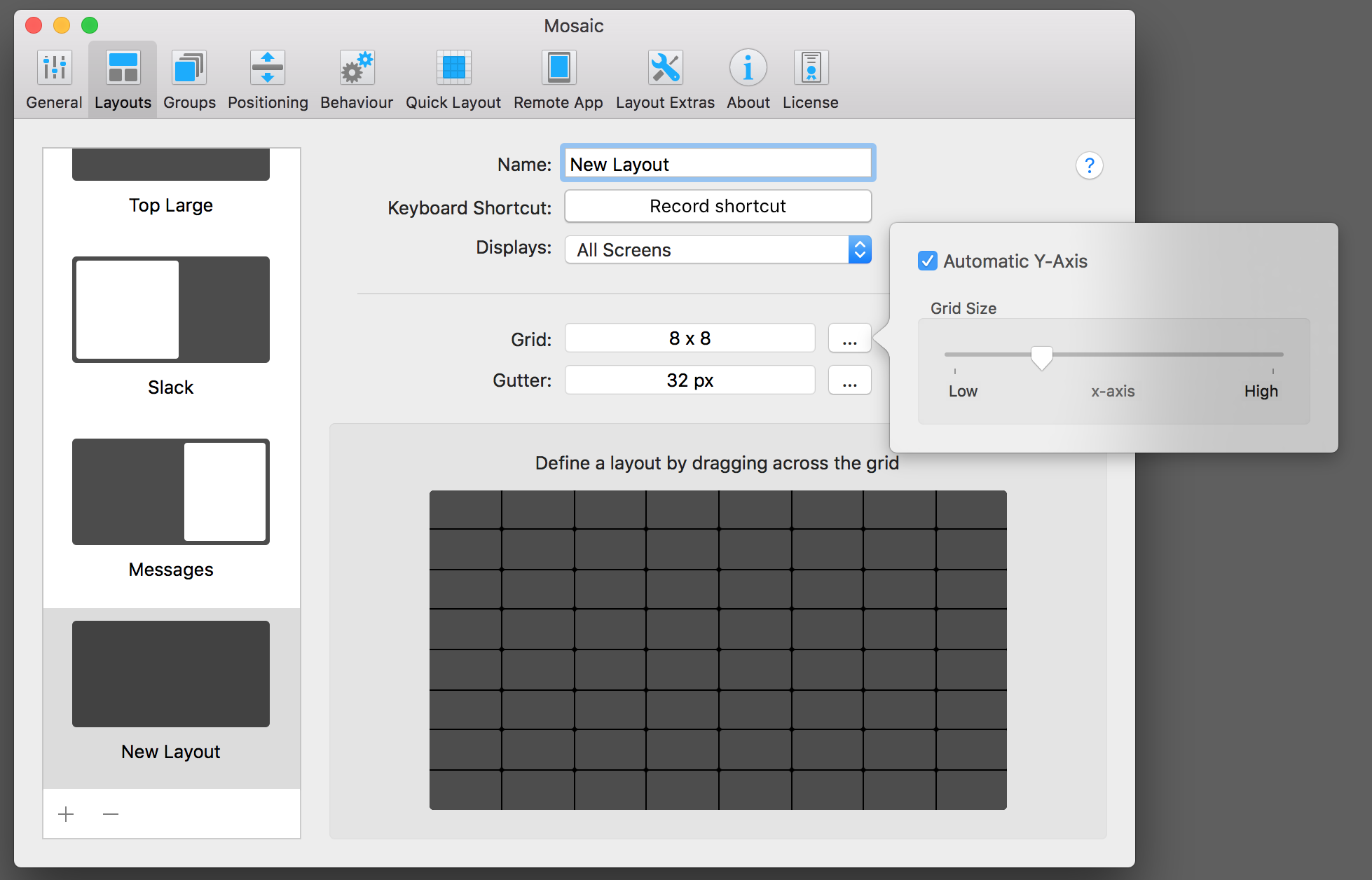
Being one to tinker, I personally adjusted this setting so the option key must also be pressed before the dialog appears. The ability to adjust these settings to better suit your needs is great in Mosaic.
Other options, like “Click and Select” allow a keyboard shortcut to present a layout picker for the currently active application. It also allows for quick access to custom layouts, where you select a section of a grid size the application. This quick customization is fun, and can be useful for larger window apps (like a web browser).
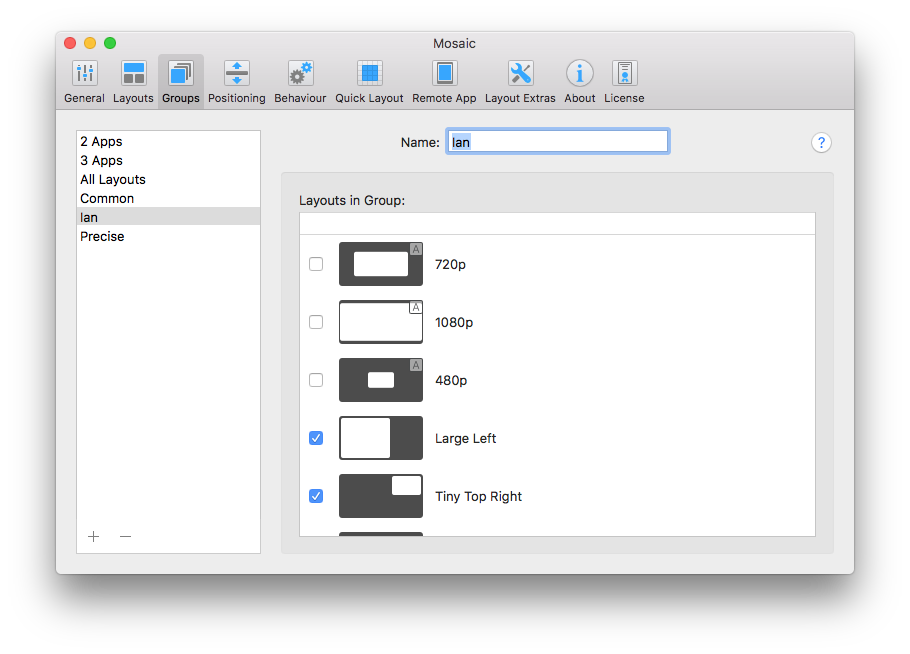
Unlike Apple’s current approach to fullscreen multitasking applications (with their full screen and 2 up views), Mosaic doesn’t require the app to support special full screen or side-by-side, but simply needs to be resizable. And if an app can’t be resized, a simple notification lets you know “Hey, something couldn’t be resized because reason“. It’s a delightful experience.
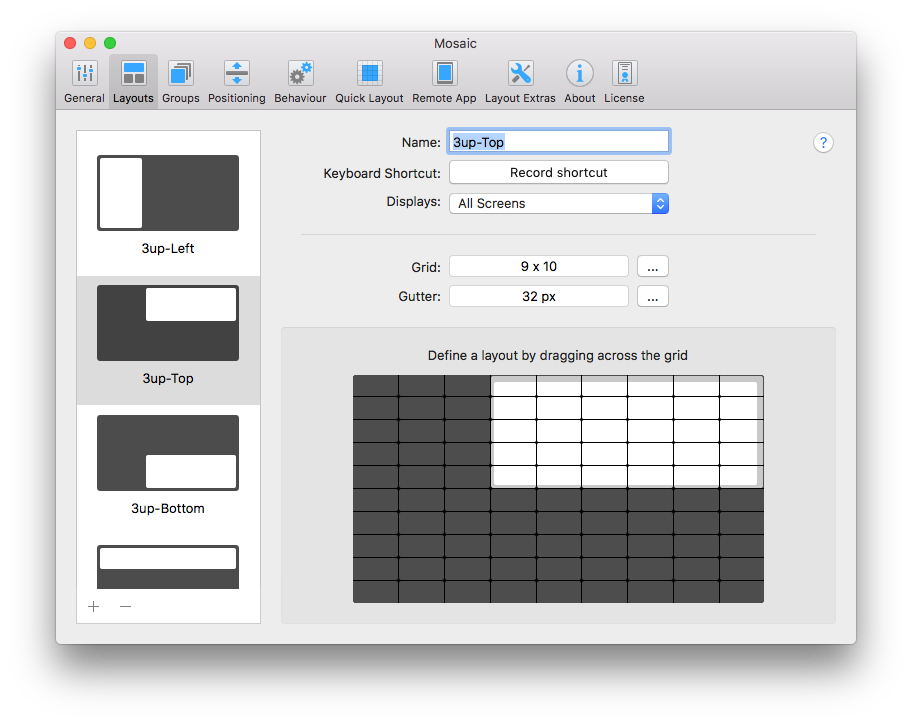
The other big benefit of Mosaic vs the built-in macOS variant is the ability to have 3, 4, 5, or more apps all designated in their appropriate spaces without overlapping or needing to swipe through spaces. On a giant 27″ 5K iMac, this actually feels usable. Huge kudos to the folks at Light Pillar for one-upping Apple.
Another great feature of Mosaic is the ability to create your own custom layouts. For me, the first thing I did was make a three-section layout for Tweetbot, Messages, and Slack (since I often bounce around those three when I’m not doing actual work).

I also setup one for work, specifically to set a browser to ~72% of the screen (5/7), and ~28% for my Remote Desktop client (2/5). Making this layout pairing, and adding it to my group menu has likely saved me 30 minutes in the past month (did I mention this was an OCD thing for me?).
Other great features of Mosaic include a quick positioning option (moving an app to any side or corner of the display without resizing), and options for screen shotting the selected window and saving it to your desktop (or wherever you choose), or grabbing a screen shot and copying the image to your clipboard. These “extra” features are great power user tools, and are super convenient (for me, at least).
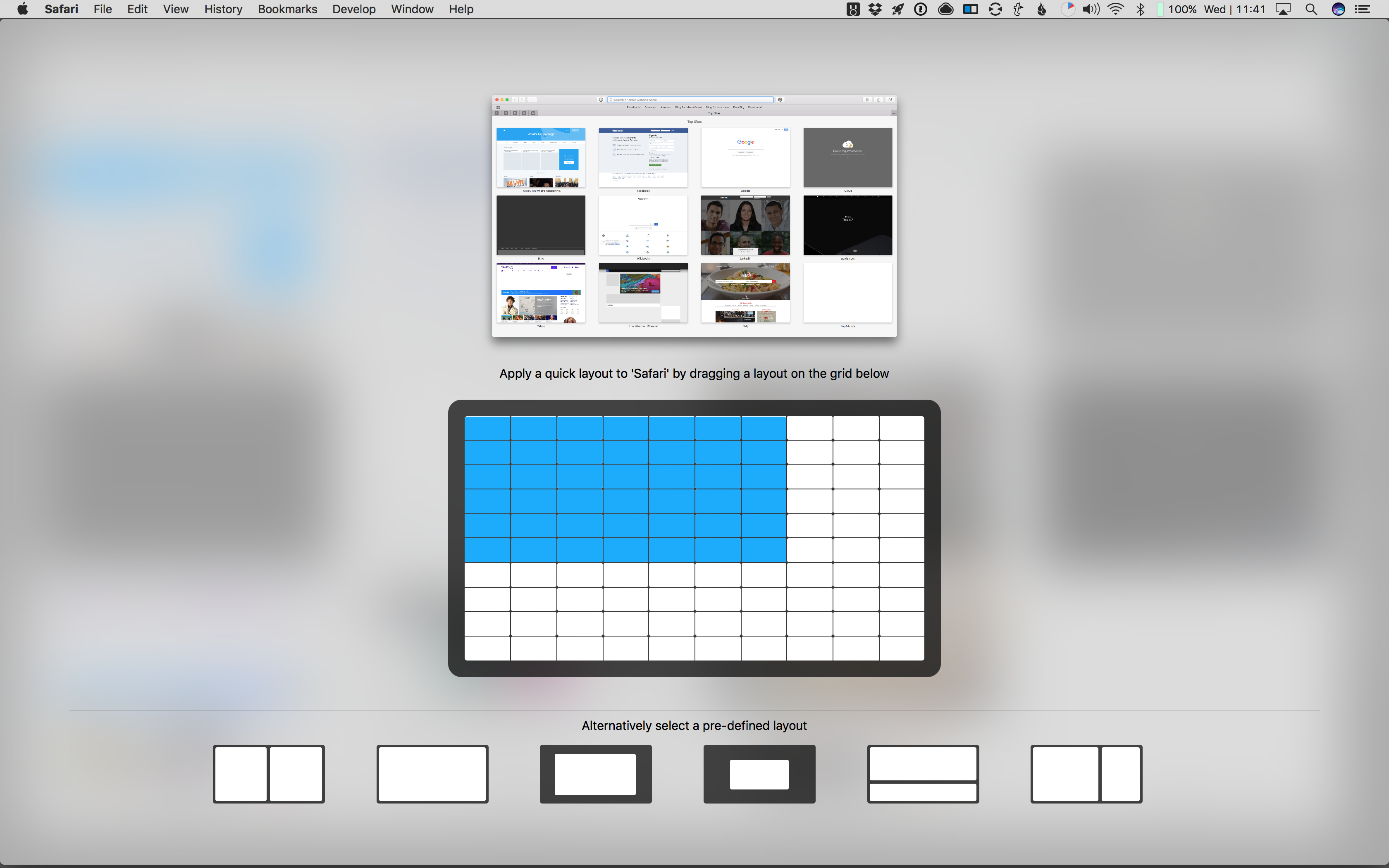
The only feature I find currently missing (one I hope the developers add) is an “auto-arrange” that puts all the currently active apps in a pre-determined position. This would save the step of click and drag, and enable a simple keyboard shortcut or click of the mouse to move all my apps to their assigned locations.
Verdict
Mosaic is a delightful utility that solved a problem that I didn’t know NEEDED solving. It has improved my efficiency on my computer by enabling me to spend less time fiddling and more time actually working. As I use it more and more, I find that I miss it when I’m on a computer that isn’t mine. For being a third party application, it feels like a native part of macOS, and I can only imagine it getting better from here!
Rating: 4.0/5.0
Pros:
- Custom layout templates
- Easy to use
- Screen capture & quick layouts
Cons:
- No auto-layout feature (yet)
If you’re anywhere near as fiddly as me when it comes to the layout and organization of apps on your Mac, Mosaic is hands down a fantastic utility to check out! Get it today from Light Pillar or with a Setapp subscriptions
Disclaimer: This review was not paid for by the developer. Light Pillar did supply a complimentary copy of the app. All thoughts and opinions are my own.
